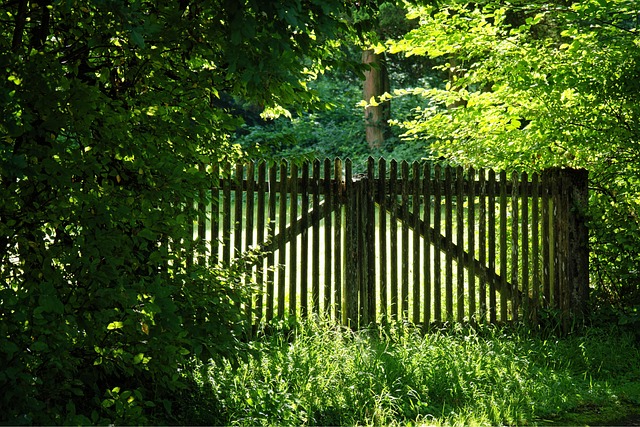In coastal regions, where harsh weather conditions and salt air pose unique challenges, durable wooden fencing is an attractive and sustainable solution. This article delves into the intricacies of selecting and maintaining robust wooden fences designed to withstand the rigors of coastal environments. From understanding local climate dynamics to choosing resilient wood species and exploring creative design options, we provide comprehensive guidance for homeowners seeking long-lasting, aesthetically pleasing barriers that blend seamlessly with coastal landscapes.
- Understanding Coastal Conditions for Fencing
- Benefits of Durable Wooden Fencing
- Choosing the Right Wood Species
- Installation Considerations for Coastal Locations
- Maintenance and Longevity Tips
- Design Options for Coastal Fences
Understanding Coastal Conditions for Fencing
Understanding coastal conditions is vital when selecting fencing materials, especially durable wooden options. Coastal areas present unique challenges due to harsh weather patterns, including high winds, heavy rainfall, and prolonged exposure to salt water—all of which can impact the longevity of outdoor structures. For instance, strong gales can exert significant pressure on fences, while salty air accelerates wood deterioration.
Therefore, when choosing wooden fencing for coastal properties, it’s crucial to opt for treated or naturally durable hardwoods that possess inherent resistance to rot and decay. Additionally, proper installation methods, including elevated posts set in concrete, can enhance the fence’s structural integrity against these harsh environmental factors.
Benefits of Durable Wooden Fencing
Durable wooden fencing offers an array of benefits for coastal areas, where traditional materials might struggle to withstand harsh weather conditions and salty air. Firstly, wood is a natural, renewable resource, making it an eco-friendly choice that can be sustainably sourced and maintained. This is particularly advantageous in coastal regions where environmental consciousness is paramount.
Secondly, the right types of durable wood, treated appropriately, can resist rot, pests, and extreme weather better than many other materials. This longevity means less frequent replacement, reducing construction waste and saving costs in the long run. Additionally, wooden fencing can be aesthetically pleasing, providing a classic, natural look that complements coastal landscapes while offering privacy and security for homes and businesses.
Choosing the Right Wood Species
When considering durable wooden fencing for coastal areas, selecting the right wood species is paramount. Softwoods like cedar and redwood are popular choices due to their natural resistance to rot and insects. These woods not only withstand the salty marine environment but also maintain their aesthetic appeal for years. However, it’s essential to understand that different species have varying durability levels; for instance, treated pine can be a cost-effective option, while exotic hardwoods like ipe offer exceptional longevity but come at a higher price point.
Each wood species has unique characteristics that influence its suitability for coastal settings. Factors such as moisture resistance, density, and natural oils play a crucial role in determining how well the wood will perform over time. For instance, cedar’s natural oils repel water and insects, making it an excellent choice. On the other hand, treated woods may require additional maintenance to ensure their longevity, but they can be a practical solution for those on a budget. Understanding these variations ensures that your fence not only withstands the coastal climate but also aligns with your project’s specific needs and financial considerations.
Installation Considerations for Coastal Locations
When installing wooden fencing in coastal areas, several unique considerations come into play due to the region’s harsh marine environment. First and foremost, it’s essential to choose fence materials that can withstand salty air, frequent moisture exposure, and potential wind extremes. Treated wood varieties like pressure-treated or cedar are ideal as they offer superior rot resistance.
The location of the fence line is also critical. It’s advisable to avoid planting fences too close to bodies of water, as salt spray can accelerate deterioration. Proper drainage is another key aspect; ensuring the area beyond the fence drains well helps prevent water accumulation that could weaken the fence over time. Lastly, consider regular maintenance plans tailored for coastal conditions to keep your wooden fencing durable and aesthetically pleasing.
Maintenance and Longevity Tips
When it comes to maintaining durable wooden fencing in coastal areas, regular cleaning and inspection are key. Remove any salt buildup or algae growth by wiping down the fence with a soft brush and mild detergent at least twice a year. This prevents water damage and ensures the wood remains in top condition.
For longevity, treat your fence annually with a high-quality sealant designed for exterior use. This protective layer shields against moisture, UV radiation, and insect infestation, extending the life of your wooden fencing significantly. Regular repairs, such as fixing loose boards or replacing damaged sections, are also essential to maintain its structural integrity and aesthetic appeal.
Design Options for Coastal Fences
When it comes to designing fences for coastal areas, there are numerous options that combine aesthetics and durability. One popular choice is the traditional wooden picket fence, often characterized by a series of vertically aligned boards with a decorative top rail. This style not only offers privacy but also blends seamlessly with the natural surroundings, providing a classic and timeless look.
For a more modern approach, horizontal wood panels can create a sleek and low-maintenance fence. These panels are typically made from treated wood or composite materials, designed to resist rot and corrosion caused by salty coastal air. Custom designs, such as intricate carvings or unique geometric patterns, can further enhance the visual appeal while ensuring the fence stands strong against harsh weather conditions.
